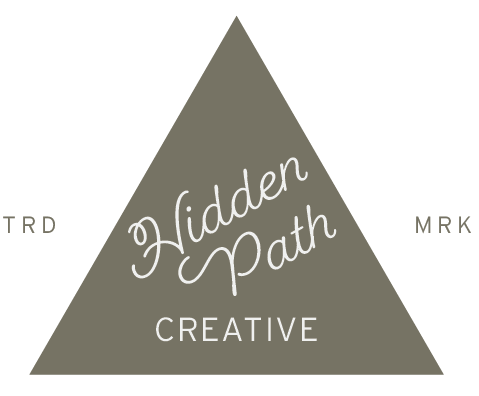Is Your Packaging Holding Your Brand Back? Common Pitfalls to Avoid in 2025
In today’s highly visual, competitive market, your packaging is often the first impression your brand makes. This first encounter can really change the game. Great packaging catches the eye and draws in potential customers while building brand loyalty. But if your designs are stuck in the past, they can quietly hold your brand back and hurt your presence in the market. With 2025 just around the corner, it’s time to ask: is your packaging holding your brand back?
In this post, we’ll explore the key pitfalls that can make packaging feel outdated and why keeping up with current trends is essential for maintaining relevance and competitive advantage in 2025.
Why Packaging is a Valuable Asset in 2025
Packaging is so much more than just keeping your product safe — it’s like your brand’s warm welcome to customers! It quickly shares your story, whether people are picking it up off a shelf or browsing online. If your design doesn’t feel fresh, inviting, or in tune with what your audience loves, you might miss out on chances to grab their attention and earn their loyalty.
In 2025, shoppers are looking for packaging that really speaks to their values and style. Trends like minimalist design, chaos packaging, and eco-friendly materials aren't just passing trends—they're what today's buyers truly expect. For example, Creative Boom points out that unique and authentic packaging can create deeper connections with customers. If brands don’t keep up with these trends, they risk coming off as outdated, which could mean losing a piece of the market.
The Hidden Pitfalls of Outdated Packaging
Failing to update your packaging to meet current customer expectations can hold your brand back in several ways. Let’s break down the most common pitfalls:
Poor Design Alignment with Trends
Packaging trends like chaos packaging are bold and exciting but must be used strategically. For example, while the Times explores how chaotic, vibrant designs captivate younger audiences, they may confuse more traditional markets. Misapplying trends can dilute your brand identity instead of strengthening it.
Outdated Visual Appeal
A dated design can make your product look less appealing next to trendier competitors. Visual clutter, overly complicated graphics, or colors that no longer resonate with your audience can all hurt sales. In contrast, a sleek, minimalist design can communicate modernity and clarity—qualities customers value when choosing a product.
Overlooking Functionality
While visual appeal is critical, functionality is just as necessary. Packaging must balance aesthetic appeal with usability. Designs that are hard to open, store, or protect during shipping will likely frustrate customers, leading to lower retention rates. Amazon’s emphasis on Frustration-Free Packaging underscores the need for functional, durable designs that enhance the customer experience.
Lack of Sustainability
Today’s consumers are prioritizing eco-friendly choices. Packaging that uses excessive or non-recyclable materials may turn off environmentally conscious buyers. According to Amazon’s Packaging Support, meeting sustainability standards also reduces costs in e-commerce supply chains. Brands that neglect this shift risk losing relevance with a rapidly growing demographic.
How to Evaluate Your Packaging
Is it aligned with your brand identity?
Your packaging should communicate who you are today—not who you were when it was last updated.Does it appeal to your target audience?
Trends like chaos packaging might be exciting, but do they resonate with your demographic?Is it functional and e-commerce-ready?
Ensure your packaging can withstand shipping, meet marketplace guidelines, and still look appealing when it arrives.Is it visually competitive?
Look at competitors in your space. Does your packaging stand out, or is it blending in?Does it meet sustainability standards?
Eco-friendly materials are no longer optional—they’re essential.
The Key Trends for 2025
To keep your brand competitive, here are the top trends that should inspire your next packaging update:
Minimalist Design: Clean lines, simple typography, and a focus on essentials.
Chaos Packaging: Repurposing recognizable packaging forms, challenging traditional product associations.
Sustainable Materials: Recyclable, compostable, or reusable options that show customers you care about the planet.
Adopting these trends doesn’t mean sacrificing your brand’s identity. Instead, it’s about finding ways to integrate modern design elements into your unique story. We’ll be deep-diving into these trends in a future blog post.
How to Stay Ahead
If your packaging is holding you back, it’s time to act. A professional redesign process can help align your packaging with 2025 trends while preserving your brand’s essence. Refreshing your packaging doesn’t have to be a long, complicated process. With the right approach, you can incorporate modern trends—like sustainability or bold design elements—quickly and effectively, ensuring your brand stays competitive and relevant in a fast-changing market.
Conclusion
Your packaging can be your greatest asset—or your biggest obstacle. In 2025, aligning with modern trends and customer expectations is essential to stay ahead. Whether adopting minimalist aesthetics, integrating sustainable materials, or embracing bold chaos packaging, the right updates can transform your brand’s presence and impact.
Don’t let outdated designs hold you back. Take the first step toward competitive, trend-forward packaging with Packaging Pronto — where creativity meets efficiency. This VIP design day provides a unique opportunity for your product packaging to be designed in a day so that you never miss a sale.
At Hidden Path Creative, our mission is to support product-based businesses with a standout packaging design that grows their brand recognition and sales.
If you want to work together, please drop us a line here. We love connecting the creators of innovative products.


